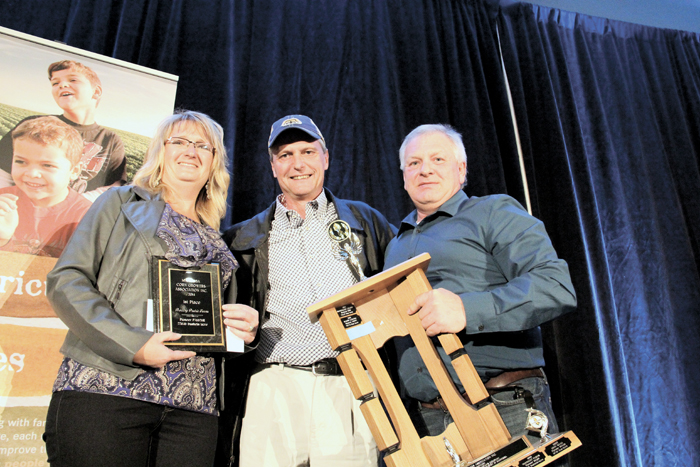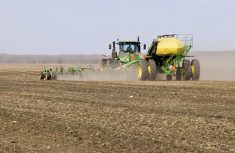How does Lorne Loeppky grow such big corn crops?
“I have a simple answer for you on that: Pay attention to detail — that’s everything from (plant) population, to seeding depth, to how the land is prepared,” the winner of the 2014 Manitoba Corn Growers Association’s yield competition said in an interview Feb. 18 on the sidelines of the CropConnect conference in Winnipeg.
Loeppky, of Rolling Prairie Farms near Tourond won the competition with a yield of 226.16 bushels an acre. The win was announced at the CropConnect banquet Feb. 17.
Read Also

Manitoba canola industry has new frontiers
Canola oil is still the main priority for the sector, but canola meal is increasingly the subject of research looking for new markets and uses for the oilseed’s byproduct.
Loeppky, who grew Pioneer P7632HR in 22-inch rows, is no stranger to producing high-yielding corn. He often finishes in the top 10 of the competition and won it in 2008 setting a new competition record of 252.95 bushels an acre.
Baker Colony, which won the competition in 2013, set a new record of 271.69 bushels an acre in 2011.
Contestants are allowed to select corn from two 50-foot rows.
“When the (combine) yield monitor goes crazy we back out and leave the strip,” Loeppky said. “We usually leave two to six strips, then evaluate them and make a pick.”
The hybrid Loeppky won with was planted on about 60 per cent of his 1,100 acres of corn. It was a commercial hybrid, not one intended for much farther south, giving it a higher yield potential, but also increasing the risk of not maturing in time if grown here.
While the corn competition doesn’t reflect yields across an entire farm or field, it demonstrates what yields are possible.
Loeppky estimates his 1,100 corn averaged around 165 bushels an acre in 2014, making it among one of his better crops.
Province-wide corn averaged 115 bushels an acre, according to crop insurance data, down 13 per cent from 133 bushels an acre in 2013, but well above the 10-year provincial average of 99.
Paying attention to detail takes patience, Loeppky said. Corn hybrids have better cold tolerance than they used to, but Loeppky still delays planting until the soil is 50 F.
“It seems like the less stress you can put on that plant from when the seed is put in the ground the bigger, the better the reward is,” he said.
Bigger and better equipment helps alleviate some of the pressure.
“In my younger years you stopped the tractor at the end of the field and gave the wheel a couple of turns to make sure every row was dropping the seed,” Loeppky said.
Now if three seeds fail to get planted in a row, an alarm sounds, he added.
“With 22-inch row spacing that equates to seeds dropping every 6-1/4 to 6-3/4 inches apart. You already have almost a two-foot strip if three seeds don’t drop.”
The corn goes on the best land and is fertilized with hog manure, which comes from Loeppky’s isoweanling and feeding operations.
“Hog manure is a full package,” he said. “It has all your nutrients, all your micros (nutrients). It’s like ESN nitrogen fertilizer. I always consider manure a slow-release nitrogen.”
Loeppky seeds about one-third of his farm’s 3,500 acres to corn. “It’s a nice crop to grow and easy to market, providing you have quality.
“Our area, we look like Iowa — it’s hog barns, corn and soybeans, especially this last year with the boon in soybean acres,” he said. “To find a barley field in the area, it’s pretty much non-existent.”




















